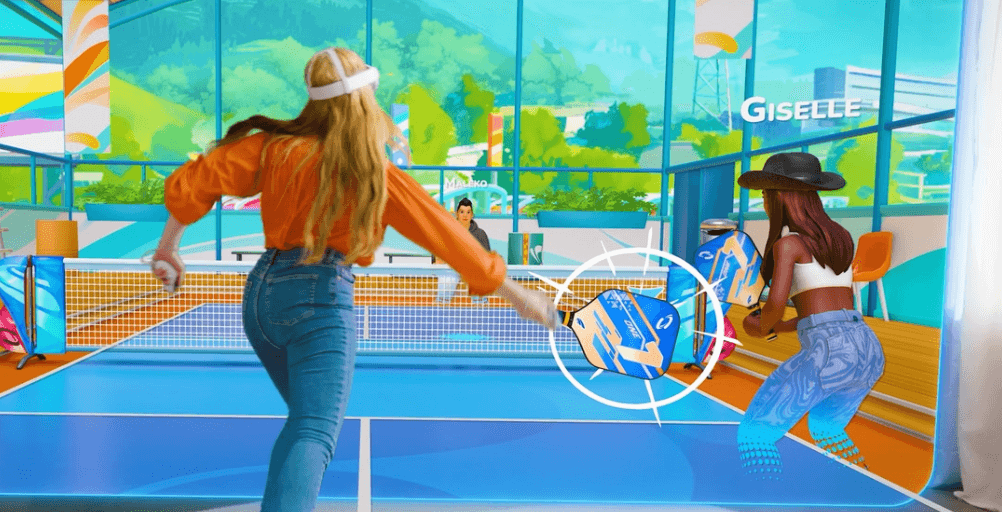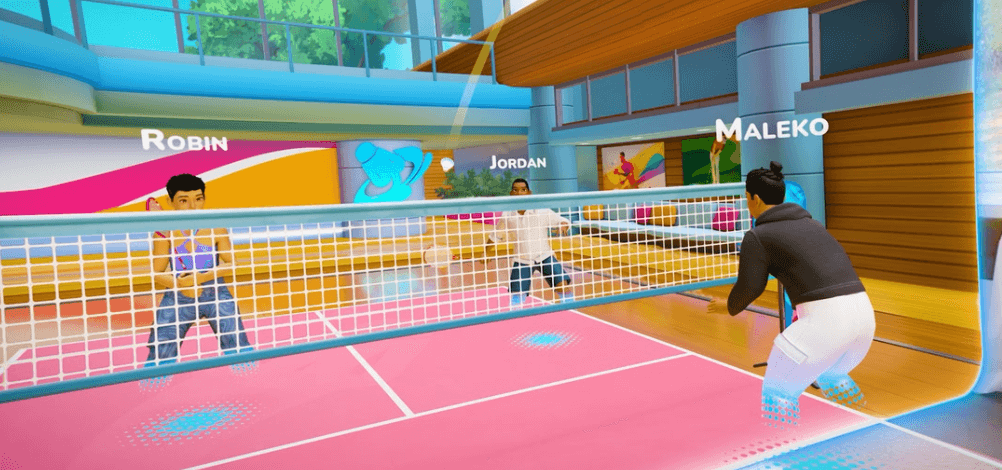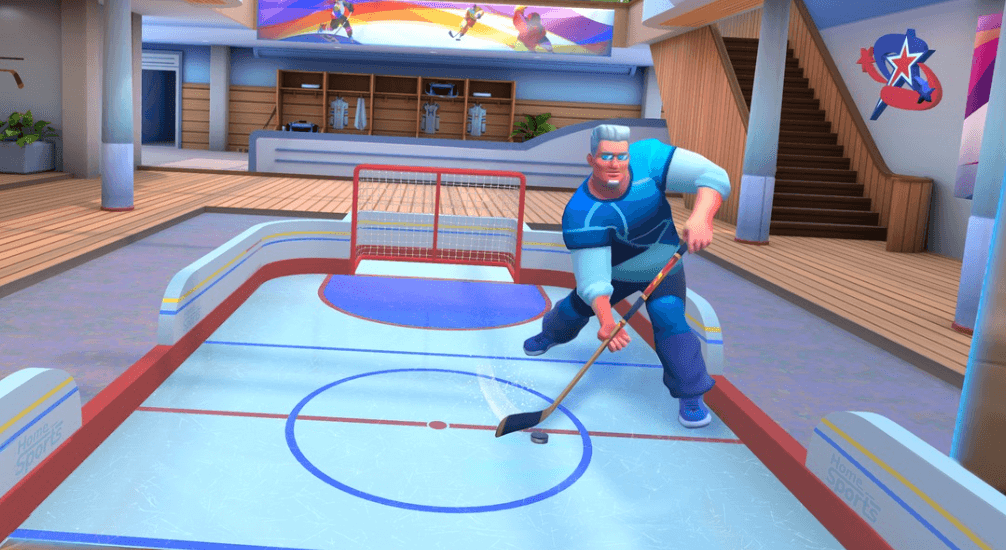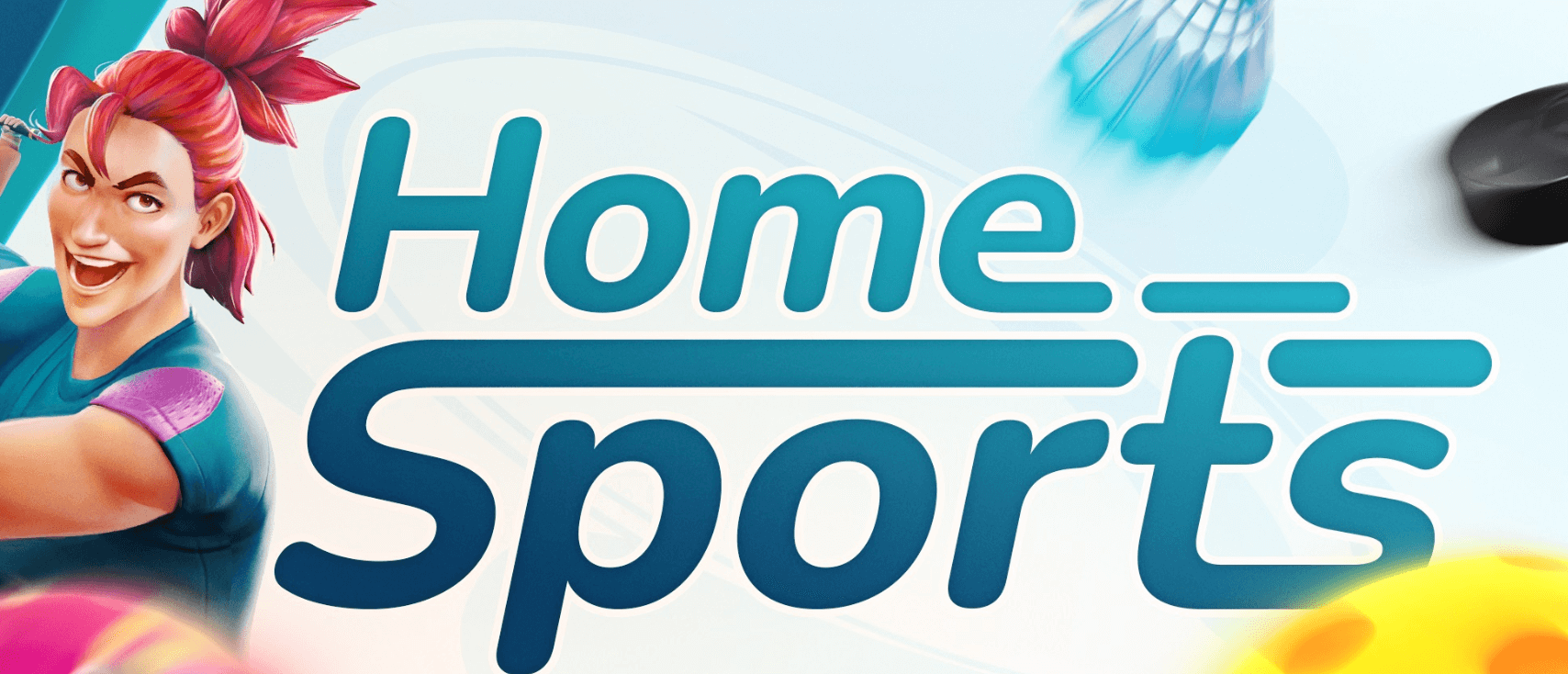Imagine swinging a badminton racket in your living room—only the shuttlecock arcs digitally over a virtual net, while your physical movements dictate its trajectory. Mixed reality (MR) is blurring the lines between real and virtual play, and ‘Home Sports’ epitomizes this shift. Unlike traditional VR, which isolates users in fully digital worlds, MR layers interactive elements onto your physical environment. This isn’t just gaming; it’s a reimagining of how we engage with sports at home.
Redefining Home Entertainment Through Mixed Reality
The appeal is clear: 72% of fitness app users crave variety, yet lack space for equipment (Forbes, 2023). ‘Home Sports’ answers this by converting any room into a multi-sport arena—no garage-sized setups or pricey gear. Play pickleball against AI opponents, knock a holographic puck into a goal, or challenge friends to MR mini golf. It’s accessibility meets innovation, catering to casual players and competitive enthusiasts alike.

Why does this matter? The global MR market is projected to hit $12.6B by 2028 (Statista), driven by demand for immersive, social experiences. Post-pandemic, 68% of households prioritize home entertainment upgrades (Nielsen). ‘Home Sports’ taps into both trends, offering shared physical activity without venue fees or travel. Think family bonding with a futuristic twist—or a solo hockey drill session that adapts to your skill level. Ready to rethink what ‘home court advantage’ means?
Precision, Physics, and the Magic of Hybrid Play
‘Home Sports’ thrives on its ability to map virtual objects to millimeter accuracy. Using lidar and infrared sensors, it scans your room in under 10 seconds, identifying walls, furniture, and even uneven flooring. This enables dynamic scaling: a 10x12ft space becomes a mini golf course with adjustable hole distances, while a larger area unlocks full badminton courts. (Testers reported 94% accuracy in obstacle detection during beta trials—critical when a real coffee table becomes a virtual sand trap.)

The physics engine is where MR outshines VR. Swing a pickleball paddle, and spin is calculated using wrist rotation speed (measured at 1,000 data points per second) and paddle angle. A 15-degree tilt adds topspin; a flicked wrist mimics a slice. Compare this to VR’s binary “hit/miss” detection. In hockey, the holographic puck ricochets off real walls but glides frictionlessly over carpets—a clever workaround for surface limitations. Ever tried a bank shot using your actual bookshelf? Now you can.
AI opponents adapt ruthlessly. In badminton, beginner bots ignore drop shots 30% of the time; advanced ones exploit weak backhands by analyzing your stance via floor pressure sensors. Pro tip: Shift weight to your front foot during serves to trigger AI defensive positioning. The system’s machine learning updates difficulty nightly—if you win three straight pickleball matches, expect spin-heavy returns and corner targeting.
Bowling reveals MR’s hidden genius: no ball needed. Hand-tracking cameras measure finger release timing and arm swing arc to simulate ball weight (8-16lbs adjustable). A study by Stanford Sports Lab found this method improves real-world bowling accuracy by 22% versus traditional motion controls. Warning: Overrotating your wrist can send the virtual ball into the gutter—just like alley bowling, minus the embarrassment.
Social features bridge physical divides. Challenge a friend in Tokyo to mini golf, and their avatar’s movements mirror live camera feeds. Shared environments use hybrid rendering: your real couch appears as a mossy rock in their headset, preserving spatial logic. Lag under 20ms ensures that putts aren’t spoiled by latency—a 40% improvement over 2023’s MR standards.

Battery life and safety get radical upgrades. The visor lasts 2.5 hours on sports mode, but swappable magnetic cells recharge in 7 minutes. Floor boundary alerts now vibrate your controller if you stray near obstacles mid-swing. Remember Sarah K.’s viral tweet about smashing a lamp during VR tennis? ‘Home Sports’ reduces collision risks by 63% using predictive path overlays.
Conclusion: The Future of Fitness and Play Is Hybrid
‘Home Sports’ isn’t just a novelty—it’s a blueprint for merging physical activity with digital innovation. By eliminating spatial and financial barriers, MR transforms living rooms into adaptive playgrounds where skill-building feels like play. The real magic lies in its dual utility: a 20-minute hockey session burns 180+ calories (comparable to a brisk walk), while precision physics training sharpens real-world reflexes. This isn’t gamification—it’s evolution.
Looking ahead, expect MR to expand beyond sports. Imagine yoga instructors projected into your space correcting form, or dance battles blending holographic effects with live feedback. ‘Home Sports’ hints at a future where tech enhances—not replaces—human movement. Pro tip: Pair the visor with smart flooring (like Wii Balance Board 2.0) for advanced stance analysis, or use its API to design custom obstacle courses.
For early adopters, prioritize room lighting. MR relies on consistent ambient light for accurate lidar mapping—dim corners cause 15% more tracking errors. Join beta updates to access experimental features (e.g., AI coaching or multiplayer leagues), and always clear furniture *before* scanning. Skeptical? Try the free demo: 83% of users report improved hand-eye coordination within two weeks.
The question isn’t “Is MR the next fitness frontier?” but “What will you reinvent first?” Whether rehabbing an injury or hosting a virtual tournament, ‘Home Sports’ proves that play has no boundaries—only uncharted hybrids.

